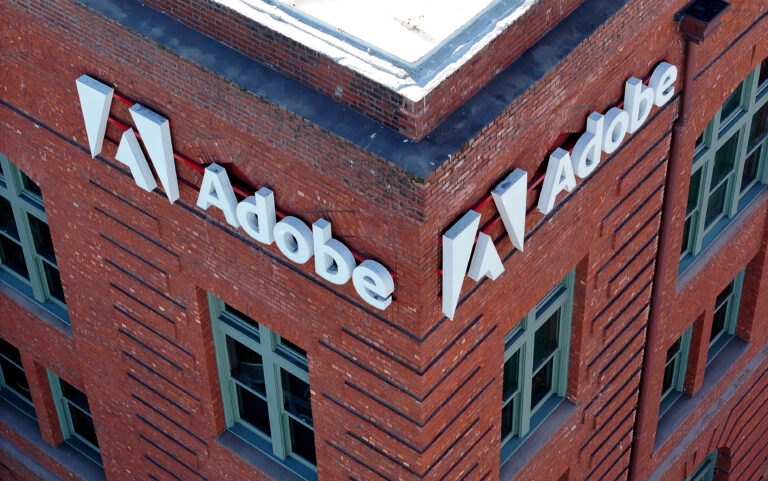
It’s rare to come across someone who hasn’t heard of Adobe.
The multinational computer software company is famous for its creative suite of software products, such as Photoshop, Illustrator, Acrobat Reader, and Premiere Pro.
These programmes are widely used for tasks such as photo editing, graphic design, document management, and video editing. Alternatives for Adobe are out there, but Adobe remains the industry standard and has even become a requirement for anyone who wants to work in a professional creative space.
And even if you’re not a creative professional, these tools are useful when you want to touch up a photo or create your next TikTok video.
But like all good things, Adobe comes with a price — literally.

You may be tempted to try to get a cracked copy of Adobe’s applications, but unfortunately, it’s very difficult. Source: AFP
Adobe’s price breakdown – is it really worth it?
Pricing varies based on your contract choice. The full suite of Adobe Creative Cloud costs a whopping US$89.99 a month, while it’s US$59.99 a month if you choose to lock in a 12-month plan. If you have the money to spare, a yearly plan is also available, coming in at US$659.88 annually.
It’s a little cheaper for students and teachers, coming in at US$19.99 a month, and they also offer custom packages for businesses with teams that require Adobe services.
But let’s face it, even with Adobe’s discounts for students and teachers, or may it be one of their “generous” Photoshop or Photography bundles, it’s still a fact that Adobe charges an exorbitant price for its services.
The one saving grace is perhaps Adobe’s use of geo-based pricing, which adjusts each package according to the country you’re in. For example, Adobe Creative Cloud costs 56.98 pounds (US$72.60) a month in the UK, while it costs 1143.83 baht (US$31.14) in Thailand.
While some may try to use a VPN to get cheaper prices for Adobe packages, this goes against their Terms of Service and could result in account suspension or termination. And, of course, there are no refunds.
It’s especially difficult for students, freelancers, and even professionals who have to pay for their own Adobe subscription because their companies are unwilling to cover it. It’s even harder for international students, who are forced to shell out prices based on which country they’re studying in.
Thinking of ditching Adobe? You’re not alone.
Many are turning to alternatives for Adobe, attempting to find cheaper or even free substitutes that they can use for personal or professional reasons.
And recently, there has been even more reason to find alternatives for Adobe.
Adobe’s questionable practices
Adobe has made some questionable business decisions over the past few years.
The company drew criticism for dropping its previous one-time-purchase model in favour of recurring subscriptions in 2013.
Users who attempted to use older versions of the software to avoid paying for the subscription were slapped with warnings from Adobe, telling them that they were no longer legally authorised to use the software they may have thought they owned.
Secondly, many people don’t realise that their pricing tiers lock them into a rather expensive situation. Most people opt for the annual subscription with monthly payments, which is almost half the price of the standard monthly subscription.
What they don’t realise is that Adobe will charge 50% of the remaining contract if they cancel their plan. If they drop the full US$659.88 for the annual plan, there are absolutely no refunds after 14 days.
Always read the fine print, people.
Pro tip: if you want to cancel your current plan, switch to another plan and choose the cheapest option, then cancel your plan immediately. Congratulations, you’ve avoided the exorbitant cancellation fee.
In recent times, Adobe has implemented artificial intelligence into its applications.
Photoshop, Illustrator, and Lightroom now have generative AI, which raises a plethora of concerns regarding user privacy. Adobe Firefly, as it’s referred to, was enthusiastically promoted as a means for people with limited creative experience to quickly produce content at scale.
While this may sound attractive to businesses, it’s not for creative professionals who are anxious about their job security.
To add salt to the wound, the company issued a terms of service update in June 2024 that garnered outrage online.
A section stated that “techniques such as machine learning” may be used to analyse content to improve services, software, and user experiences. Many creatives took Adobe’s vague language to mean that it would use their work to train Adobe Firefly – the company’s generative AI model – or access sensitive projects that might be under NDA.
Here it is. If you are a professional, if you are under NDA with your clients, if you are a creative, a lawyer, a doctor or anyone who works with proprietary files – it is time to cancel Adobe, delete all the apps and programs. Adobe can not be trusted. pic.twitter.com/LFnBbDKWLC
— Wetterschneider (@Stretchedwiener) June 5, 2024
It would be easy to trust Adobe if they had kept their promise from the beginning. Unfortunately, they have not, as several artists have found images referencing their work on Adobe’s stock platform – making it hard to trust the protections in place.
This has led to users mass unsubscribing and cancelling their Adobe plans, either out of worry that their work would be compromised or sheer disgust at Adobe’s lack of transparency.
Now, many are searching for the best alternatives for Adobe, such as the ones below:

Many people around the world love using Canva because of how easy it is and that it’s free. Source: AFP
Alternatives for Adobe that anyone can use
Of course, if your workplace requires you to use Adobe’s applications for professional reasons, this list may not be for you. But for those who work with graphic design, photo and video editing, or even want to add a signature to a PDF document, you may find our list helpful.
Our picks may fall into multiple categories – free alternatives, one-time payment options, subscription-based models, or perhaps even all three.
GIMP
The original, best alternative for Adobe Photoshop. GIMP has been around since 1995 and is a fan-favourite of open-source advocates. Great for all photo editing purposes, free-form drawing and other specialised tasks.
While it has an older interface and may not be as streamlined as Adobe Photoshop, it’s hard to argue when it’s absolutely free.
Inkscape
A good alternative to Adobe Illustrator. While Inkscape is primarily an illustration tool, it’s particularly powerful when it comes to making scalable 2D vectors. If your designs go onto the web, a software user interface or even a CNC (computer numerical control) machine, Inkscape may be all you need.
And it’s completely free!
Affinity
Created by Serif Ltd, a subsidiary of fan-favourite Canva, and best known for its photo editing, graphic design and page layout software for Mac, iPad and Windows. Many point to Affinity’s suite of products as the most natural alternative for Adobe.
In short:
- Affinity Photo 2 = Adobe Photoshop
- Affinity Designer 2 = Adobe Illustrator
- Affinity Publisher 2 = Adobe Indesign
Each application has a one-off payment option starting from US$18.49. If you’re interested in getting all three, they offer a universal bundle for only US$164.99. On top of that, they always have sales up to 50% off, so keep an eye out for those.
Clip Studio Paint
A fantastic alternative for Adobe Photoshop, and a hit amongst artists and designers alike. Clip Studio Paint has a wide range of brushes, textures, and tools, and is well-suited for general illustration work. It also offers features specifically tailored to comic and manga creation and even allows for basic to complex 2D animation projects.
Clip Studio Paint has a generous trial period of up to six months. After the trial period expires, the application offers a one-time purchase plan and a subscription option.
Clip Studio Paint PRO is priced at US$54, and is tailored for character art, concept art and illustration. Clip Studio Paint EX is US$237, and includes all the features of the PRO version along with advanced tools for manga, comics, webtoon, and animation.
The subscription starts at US$0.99 a month and goes up to US$24.99 a year—perfectly reasonable for students or designers of all skill sets.
Canva
For the average student or small business owner, Canva is an absolute lifesaver. Imagine having thousands of templates and graphics at your fingertips for any occasion imaginable.
Just recently, Canva rolled out its biggest update in a decade, introducing features such as integrated advertising tech for Meta, Google and Amazon ads, data autofill from sources such as Salesforce and MLS, bulk designing, enhanced photo and video editing, and more.
While most of the features are already accessible for free, those who want unlimited access can opt for the Pro plan, which costs US$12.95 a month or US$119.40 when billed annually. They also have Teams and Enterprise options.
Secure your data with confidence. Our privacy commitment protects your documents in several ways, including:
️ Automatic file removal
❌ Zero content analysis
Strict international security standards pic.twitter.com/eHnGKocgGJ— iLovePDF (@ilovepdf_com) June 10, 2024
iLovePDF
iLovePDF has over 25 tools to help users organise their PDFs, add page numbers, merge, remove and split pages, and even convert to and from other formats. The free website even has a feature to repair corrupted PDF files.
Final Cut Pro
Final Cut Pro is a behemoth in its own right, being an effective alternative to Adobe Premiere Pro. It’s been used by industry professionals for decades and continues to shine next to its competitor. Mac users especially will love the layout and workflow of Final Cut Pro.
The macOS version of Final Cut Pro is $299.99. But thankfully, it’s a one-time purchase with many free, robust plugins and an enthusiastic community.
DaVinci Resolve
An iconic video editor that is completely free, DaVinci Resolve combines a suite of video editing, colour correcting, visual effects, motion graphics, and audio post-production features. It’s even used by high-end professionals to produce feature films and television shows, such as big Marvel hits like Ms Marvel.
Its big brother, DaVinci Resolve Studio, has advanced editing capabilities, providing up to 120fps, 32k resolution and advanced HDR delivery. It’s a one-time payment of US$295, which is still pretty reasonable.










